Atmospheric Disturbances

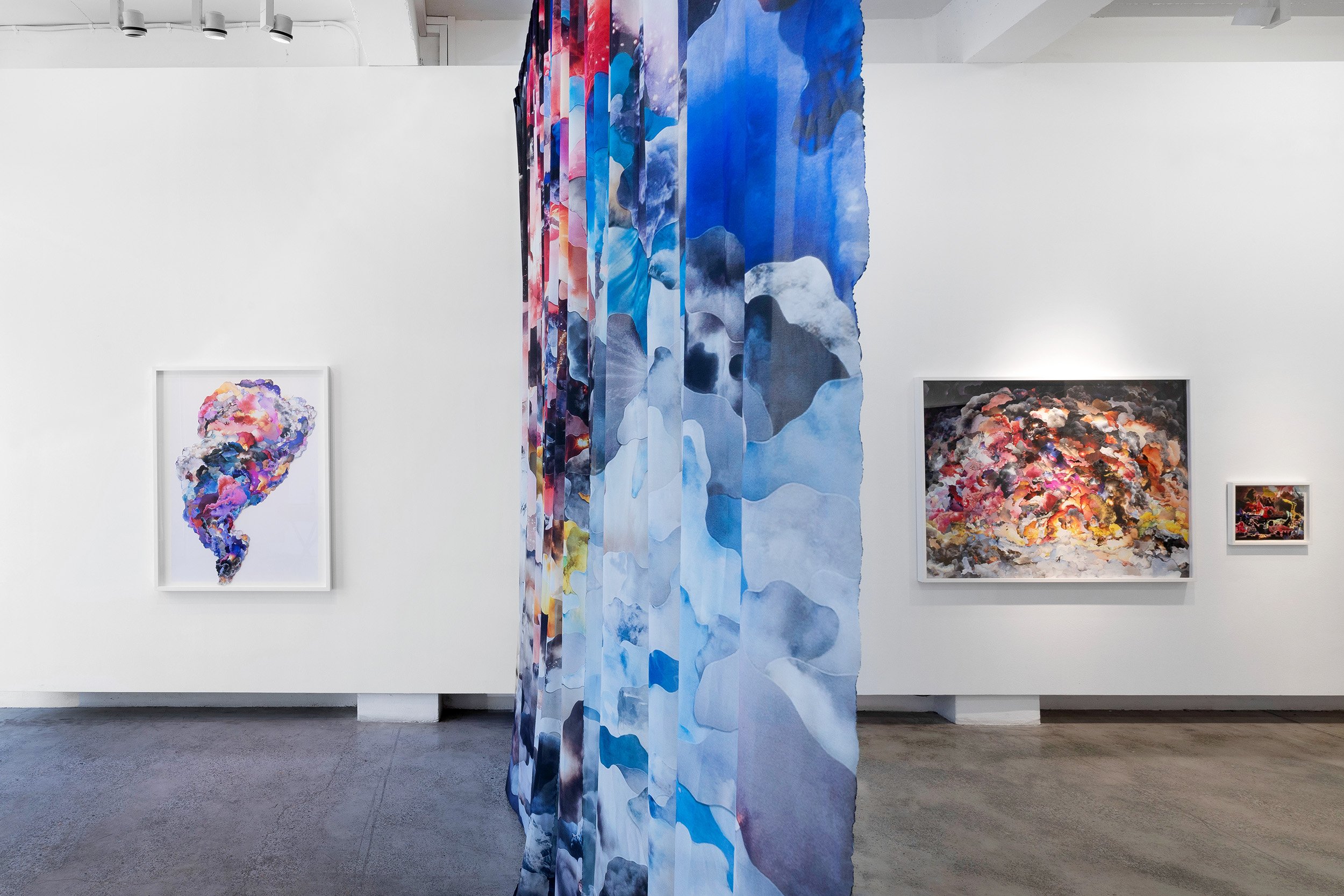
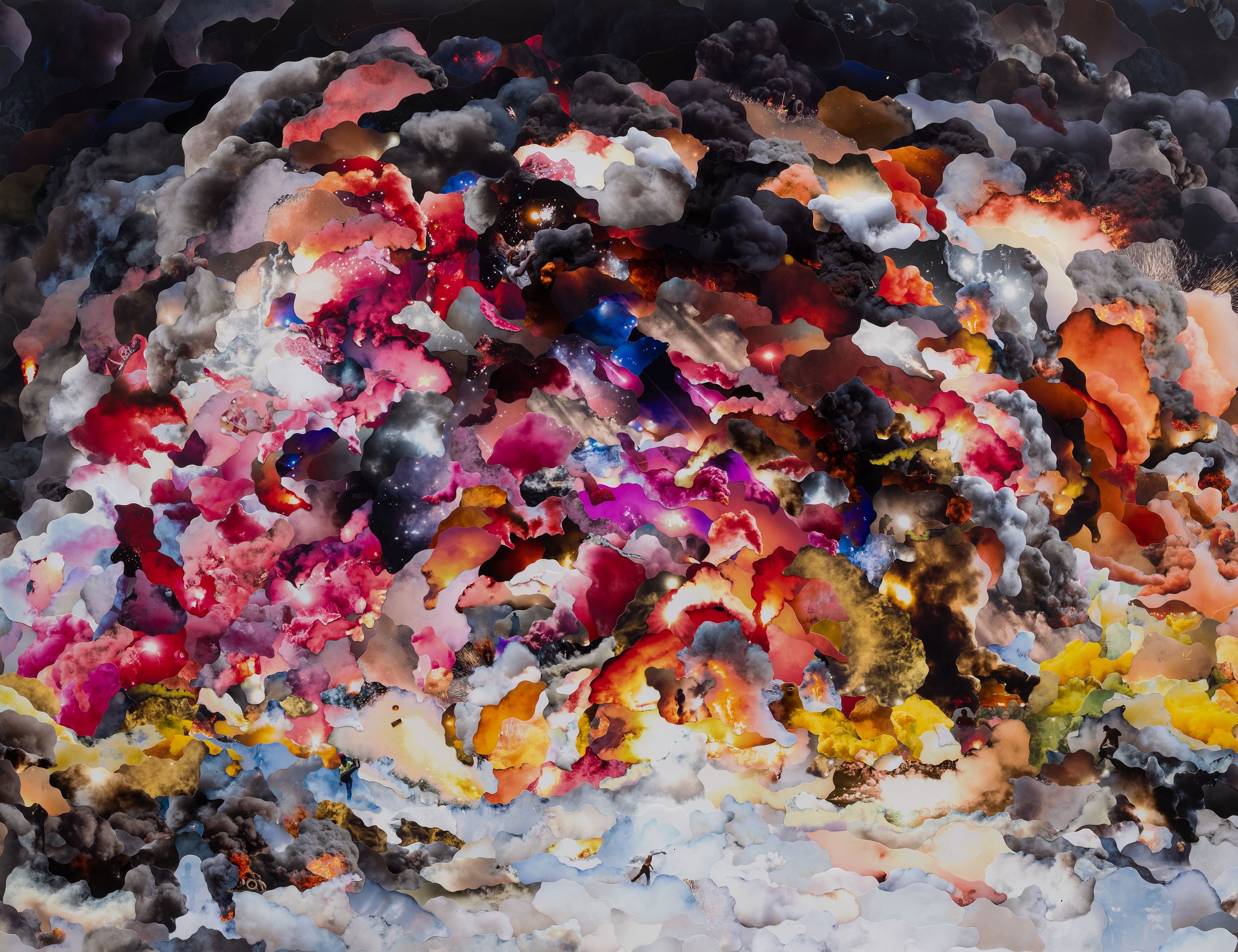
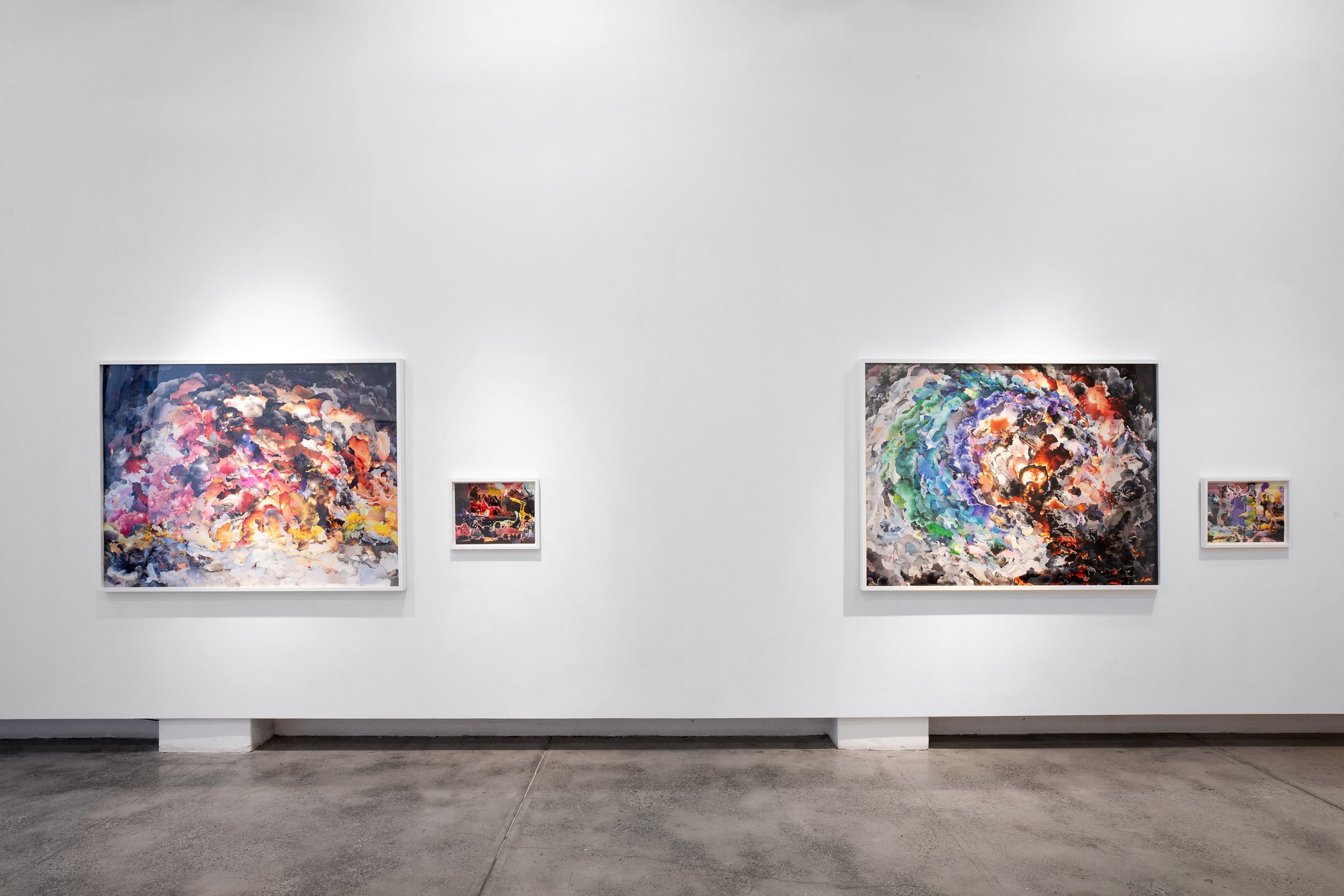

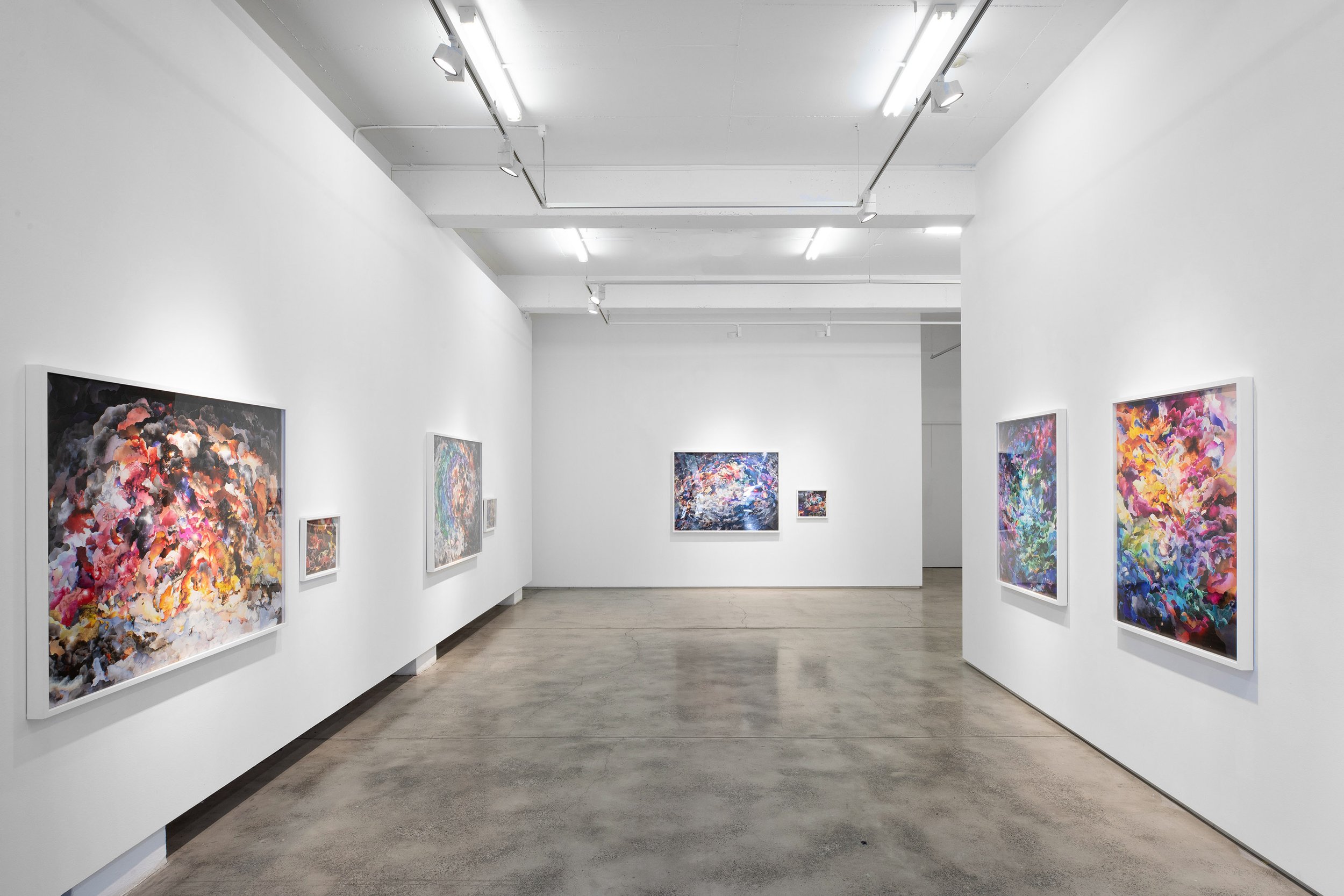


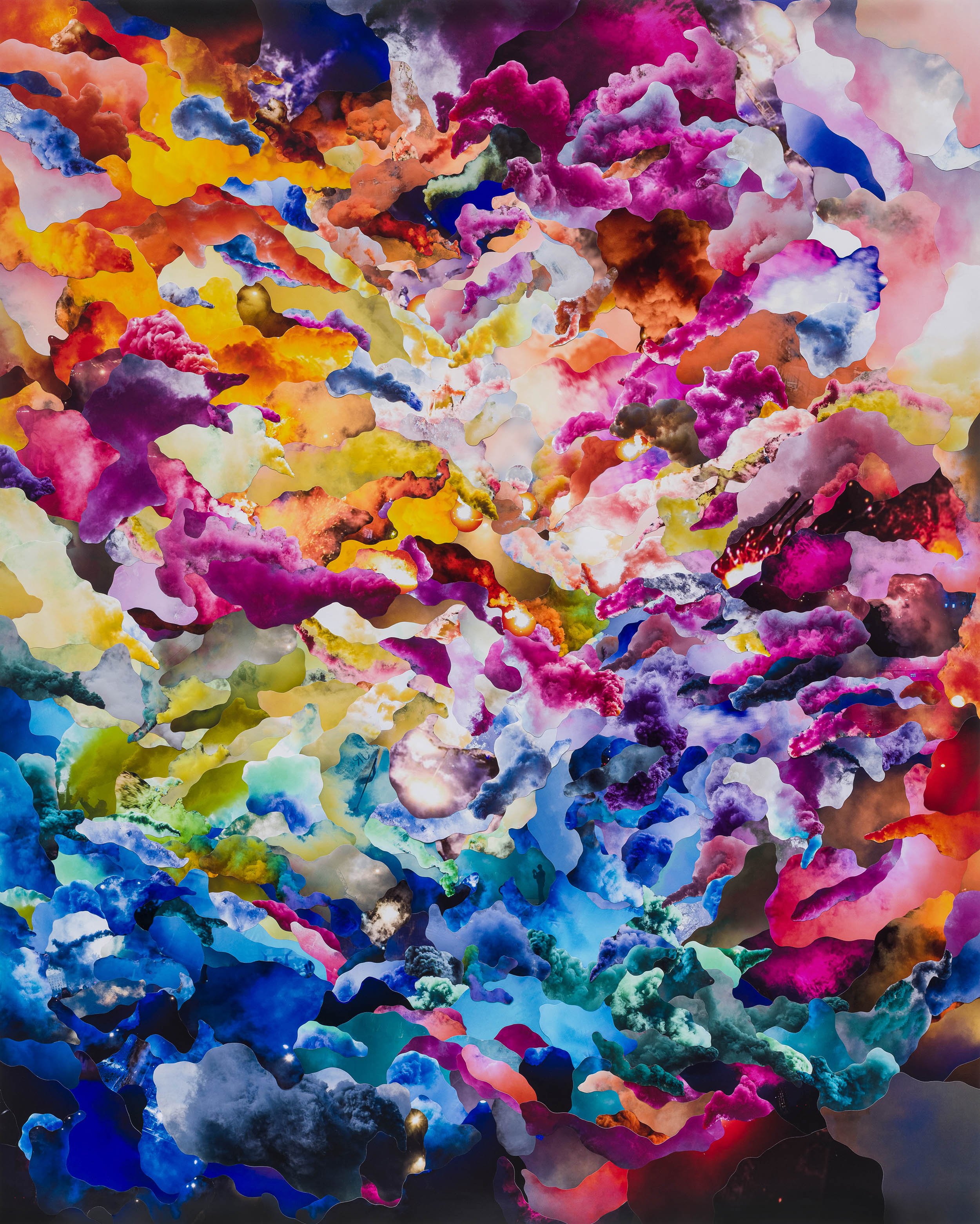
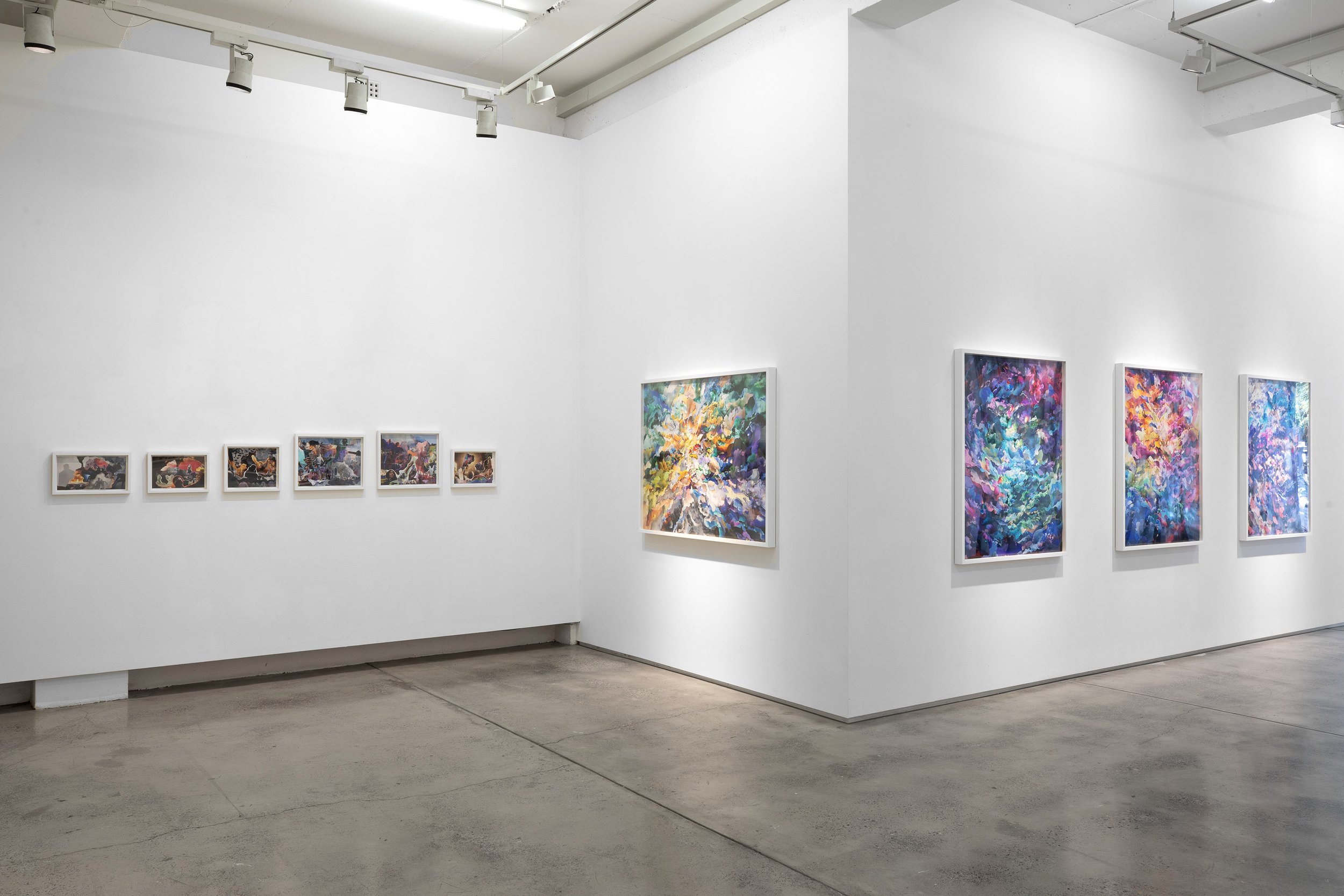
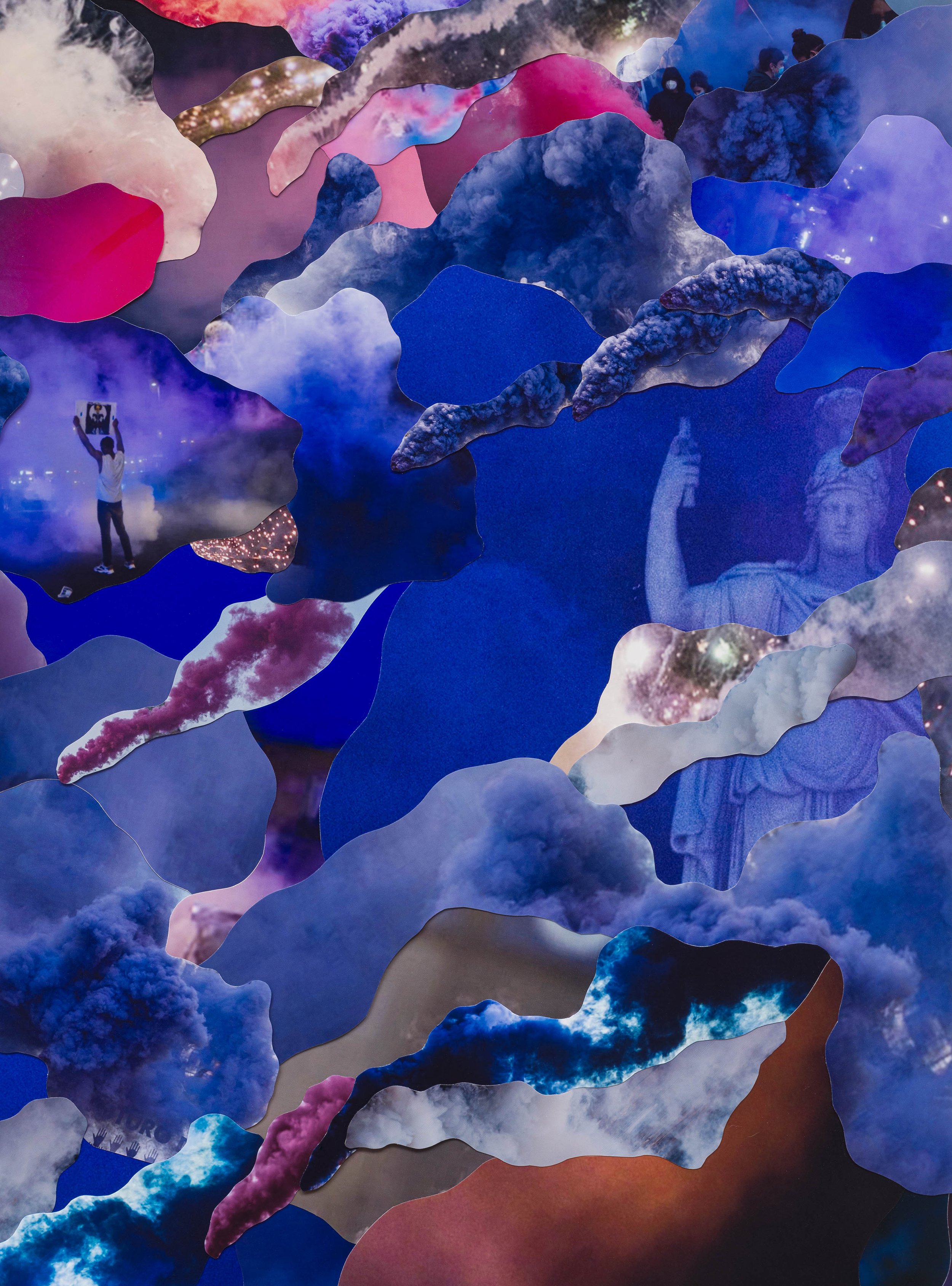
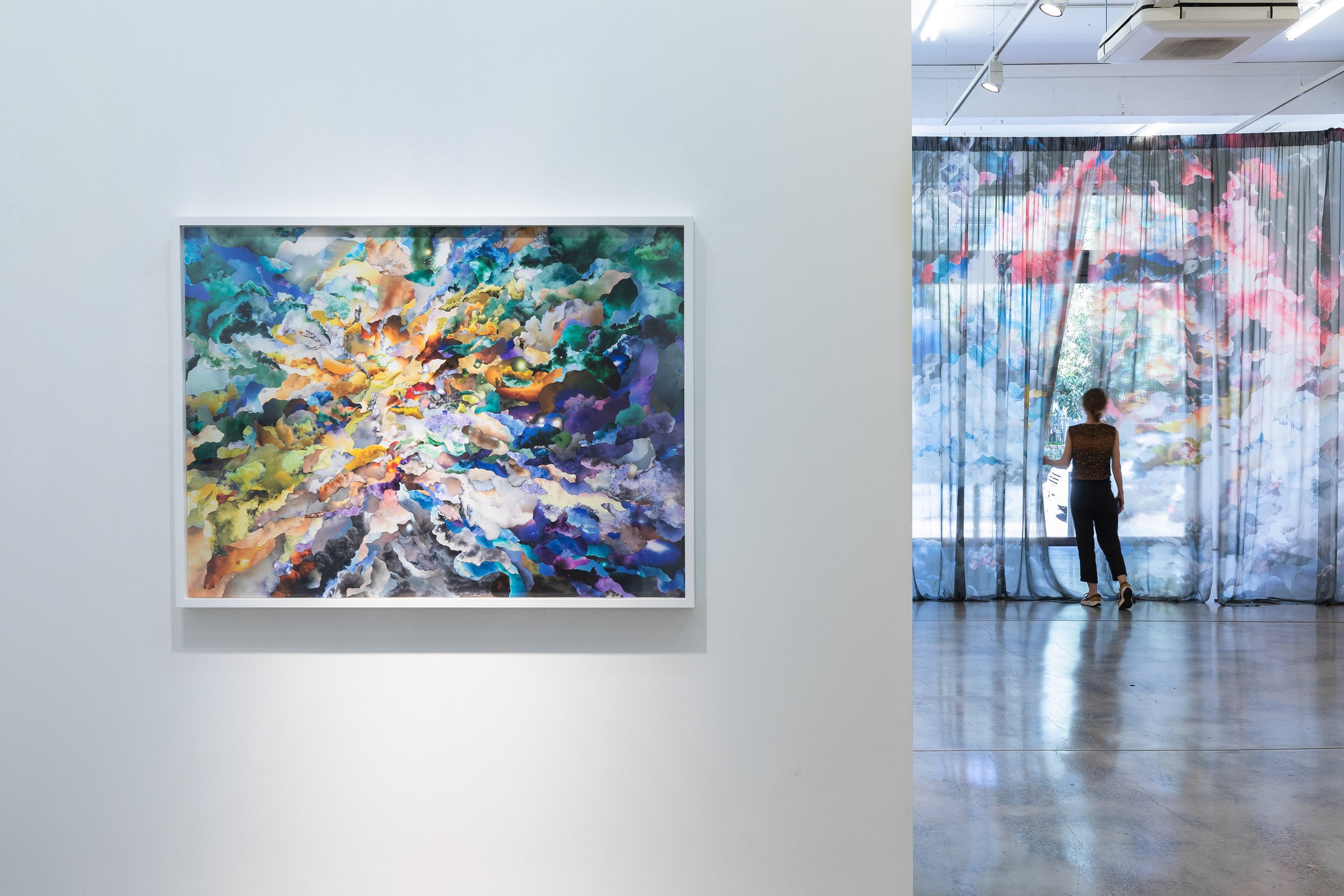
Sullivan+Strumpf is thrilled to present Jemima Wyman Atmospheric Disturbances, bringing together the artist's most psychedelic works to date. The exhibition considers protest smoke as a cloud to be contemplated, like a weather event; a gauge of disturbances past, present and future.
Wyman's practice focuses on patterns and masking to investigate visual resistance: specifically camouflage as a formal, social and political strategy in negotiating identity. Wyman's Haze series form nebulous landscapes (or smokescapes) that mimic the abstract shapes found in camouflage textiles, while her Declassified works generated from photographic off-cuts zoom in and centre human experience. Through her hand-cut photographic collages, the artist weaves wisps, plumes and clouds of smoke into a single image, illuminating the biosphere we inhabit today.
Sunspots - Jemima Wyman: Atmospheric Disturbances
by Anastasia Murney
In the 1920s and 30s, a Soviet historian and biologist named Alexander Chizhevsky theorised a connection between popular mass mobilisations and increased solar activity. He collected a huge amount of empirical data to support this idea, arguing the changing patterns of the Sun impact the human neuropsychological apparatus, leading to excitability and sharpening people’s reflexes. Chizhevsky tracked this through the development of sunspots. Sunspots are like blemishes, dark spots on the surface of the sun. A sunspot is trapped light: powerful electromagnetic forces draw hot, inner materials from the core to the surface, creating a build-up of pressure. Sunspots are a warning, signalling the imminence of violent solar storms.
Sunspots proliferate and recede in an eleven-year cycle. In each cycle, Chizhevsky proposed four epochs with distinct socio-psychological characteristics. With a small number of sunspots, the masses are peaceful and pliable. He describes the signing of peace treaties and surrenders. As the sunspots increase, new social ideas emerge, collectives are formed. There is a worsening of international relations, conspiracies start to take root. When there is a maximum density of sunspots, leaders and influential orators arise, mass movements spread with speed. Revolutions, uprisings, revolts, riots, and wars break out.Then, as the sunspots decrease, there is a sense of belatedness and breakdown. People’s councils disperse and dissolve. Uprisings are suppressed. Fatigue and disillusionment set in.
A photograph is also the product of trapped light. Jemima tells me she makes photo collages in cycles of three to six months. She scours the internet for smoke emanating not from wars but protests. The wisps, plumes, and clouds of smoke are woven into a single image. In cutting and arranging the photographs, she accentuates the billowing effects of smoke as it expands. What is striking about the newest works in Jemima’s Haze series is their galactic, psychedelic qualities. In Haze 14, the smoke stretches and magnifies bright colours: green, lilac, blue, pink, orange. These artworks remind me of the Hubble Space Telescope’s slow exposure images of the cosmos, revealing deep, swirling patterns, stellar nurseries, and giant pillars of gas and dust. Sifting through the smoke, one might locate fragments of bodies and objects: a person in a balaclava, a high-vis vest, a riot shield, an arm hurling a tear gas canister. Little figurative spots fracturing the surface of the image. To me, it makes sense to think of sunspots as people under pressure. People who join with other people to express their anger and frustration on the streets.
It feels like Jemima is asking: what moves a movement? Is revolution a cosmic event? The earliest scholars of social movements interpreted the ‘irrational’ behaviour of the crowd as a contagion, unruliness is transmitted from one individual to another. Later, scholars attempted to understand social movements in terms of self-interest, how an individual weighs up the costs and benefits of participating. Others argued the success of a social movement comes down to how organisations mobilise and compete for resources. In the 1980s, a group of scholars sought to emphasise the specific political conditions in which a movement takes shape. In much of the literature, there is a persistent search for patterns, causal mechanisms, and formulas that can be used to predict whether a social movement will succeed or fail. The question that often occupies me as I look into the archives of radical struggle, at million strong marches and world-stopping general strikes, is why them and not us? Why there and not here?
Jemima is also searching for patterns. She creates a detailed index for each photo collage with captions sometimes spanning multiple pages. In Haze 18, for instance, there is smoke from a car bomb in Baghdad, smoke from burning tires in Dakar, smoke mixed with tear gas in Gaza, and coloured flare smoke from an Extinction Rebellion protest at COP26 in Glasgow. She is interested in the repetition of certain colours and tactical repertoires that travel across the political spectrum. We can track the use of smoke as weapon, celebration, and obfuscation. In Hong Kong, for instance, small teams of anti-government ‘firefighters’ would dart out from the frontline to cover tear gas shells with a traffic cone, redirecting the smoke upward. In this sense, to look at the artworks in Atmospheric Disturbances is like tilting a Magic Eye illustration in order to coax out a new logic for understanding the connections between social movements.
I read books about revolutions. I teach and talk to students. I look at art and write about it. I go to rallies and stand on pickets. I also read Tarot cards and it’s on this level that I resonate with Jemima’s psychedelic cartographies of global unrest. Tarot cards are populated with feudal archetypes, astrological signs, and natural elements.The symbolic language of the Tarot offers an alternative approach to navigating crisis, stepping back from conventional methods of problem-solving or well-worn vocabularies that produce familiar ruts and dead ends. This is not about thinking in a straight line. Tarot, like Jemima’s photo collages, belong to an ‘irrational’ science that is willing to step into strange and experimental registers, to think in the direction of sunspots and air particles.
While researching Chizhevsky, I stumble on his second major contribution: the air ioniser, designed to filter air pollutants, such as dust, allergens, and smoke. It seems strange to reflect on the vast difference in scale between his grand, cosmic research linking mass mobilisations and sunspots and the invention of the domestic air ioniser. In Declassified 91, many of the subjects wear masks. Gas masks, surgical masks, hoodies, and helmets (private filtration systems of a different kind)are sprinkled across the Declassified series. Militant and playful forms of masking are recurring features in Jemima’s practice. In the context of social movements, a mask can dismantle formal barriers to participation, enabling a facelessness that is against the ‘I’ and the ‘you’ and in favour of the ‘we’. However, in the tenuous aftermath of the pandemicand amid ongoing climate catastrophes, the act of masking takes on a more apocalyptic tone. This is what Achille Mbembe describes as “the great chokehold” of the present. Asphyxiation is not a metaphor.
But the problem of sorting good air particles from bad remains. As Alexis Pauline Gumbs writes, “we are often navigating contexts that seem impossible for us to breathe in, and yet we must.” The root of the word ‘conspire,’ to plot and plan together, comes from the Latin spirare, which means ‘to breathe’. To join a protest, to speak and shout, to share breath and space with others is a cathartic ritual. Chants, prayers, poems, and songs are the lifeblood of movements. Jemima’s Declassified series captures the moments where activists fight to counter asphyxiation with resuscitation.
As I write these final sentences, I draw The Tower from the Rider Waite Smith deck. It is the card with the ‘worst’ reputation, signalling chaos, disaster, and turbulence. Two figures are shot from a burning castle, their faces stricken with grief and shock. Flames lick the windows and bright flecks of fire spill out the sides. Once more, I think about the predictive pattern of sunspots, mapping the co-ordinates of the oncoming storm. Sometimes, there can be no controlled release of pressure. In this context, fascist and genocidal regimes must burn in order for new worlds to be born. We live in a time of explosions. Our task is to make sense through the smoke.
All install photo credit: Jessica Maurer. And all artwork unframed and details: Ed Mumford